Difference between revisions of "DV Calculations of 4-momentum components"
| Line 352: | Line 352: | ||
Finding the correct kinematic values starting from knowing the momentum of the Moller electron, <math>p^'_{2}</math> , in the Lab frame, | Finding the correct kinematic values starting from knowing the momentum of the Moller electron, <math>p^'_{2}</math> , in the Lab frame, | ||
====xz Plane==== | ====xz Plane==== | ||
| − | <center>[[File:xz_lab.png]]</center> | + | <center>[[File:xz_lab.png | 400 px]]</center> |
<center>'''Figure 3: Definition of Moller electron variables in the Lab Frame in the x-z plane.'''</center> | <center>'''Figure 3: Definition of Moller electron variables in the Lab Frame in the x-z plane.'''</center> | ||
Revision as of 23:51, 28 January 2016
Calculations of 4-momentum components
Initial Conditions
Lab Frame
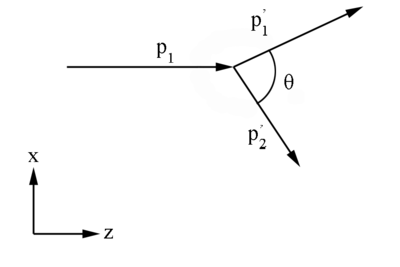
Begining with the assumption that the incoming electron, p1, has momentum of 11000 MeV in the positive z direction.
We can also assume the Moller electron, p2, is initially at rest
This gives the total energy in this frame as
where,
This gives,
Center of Mass Frame
4-Momentum Invariants
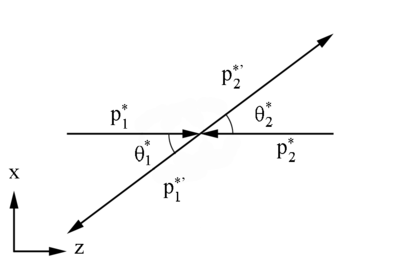
Starting with the definition for the total relativistic energy:
Since we can assume that the frame of reference is an inertial frame, it moves at a constant velocity, the mass should remain constant.
We can use 4-momenta vectors, i.e. ,with c=1, to describe the variables in the CM Frame.
Using the fact that the scalar product of a 4-momenta with itself,
is invariant.
Using this notation, the sum of two 4-momenta forms a 4-vector as well
The length of this four-vector is an invariant as well
Equal masses
For incoming electrons moving only in the z-direction, we can write
We can perform a Lorentz transformation to the Center of Mass frame, with zero total momentum
Without knowing the values for gamma or beta, we can utalize the fact that lengths of the two 4-momenta are invariant
This gives,
Using the fact that
since the rest mass energy of the electrons remains the same in inertial frames.
Substituting, we find
This confirms that the mass remains constant between the frames of reference.
Total Energy in CM
Setting the lengths of the 4-momenta equal to each other,
we can use this for the collision of two particles of mass m. Since the total momentum is zero in the Center of Mass frame, we can express total energy in the center of mass frame as
Using the relations
In the frame where one particle (p2) is at rest
which implies,
where
Scattered and Moller Electron energies in CM
Inspecting the Lorentz transformation to the Center of Mass frame:
For the case of a stationary electron, this simplifies to:
which gives,
Solving for , with
Similarly, solving for by substituting in
Using the fact that
Using the relation
This gives the momenta of the particles in the center of mass to have equal magnitude, but opposite directions.
Final Conditions
Moller electron Lab Frame
Finding the correct kinematic values starting from knowing the momentum of the Moller electron, , in the Lab frame,
xz Plane
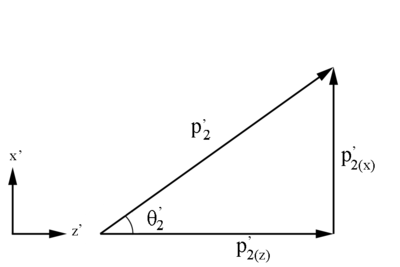
Checking on the sign resulting from the cosine function, we are limited to:
Since,
xy Plane
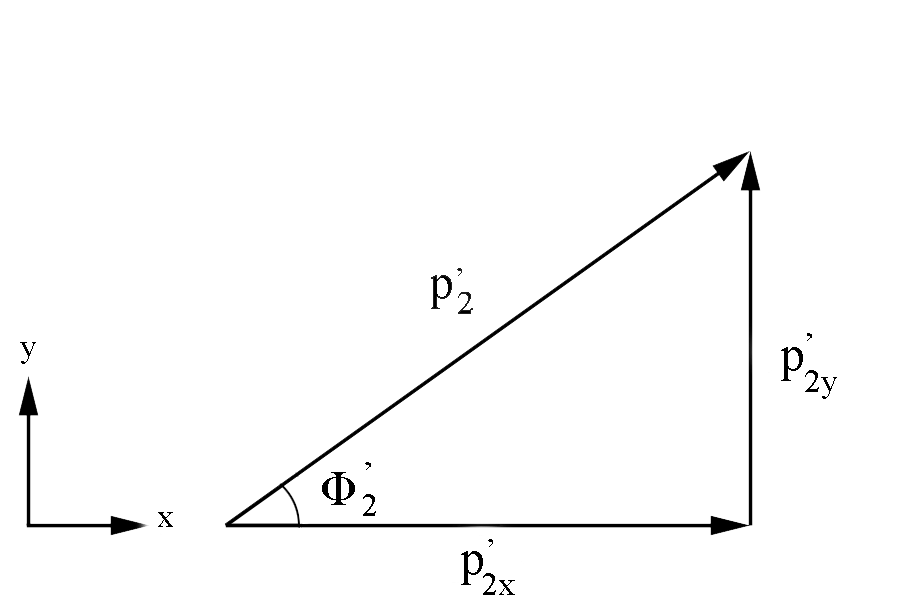
and results based on
Checking on the sign from the cosine results for
We have the limiting range that must fall within:
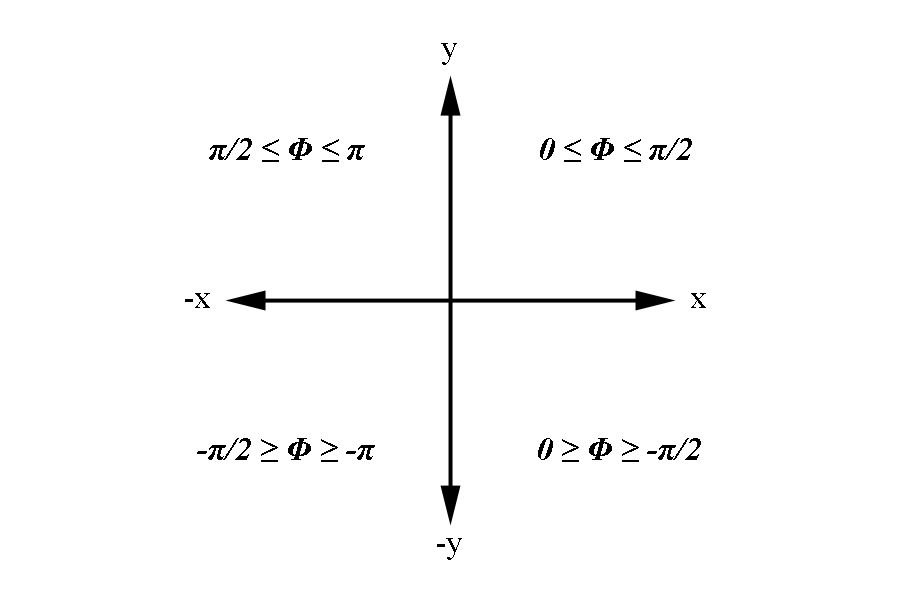
Examining the signs of the components which make up the angle in the 4 quadrants which make up the xy plane:
Moller electron Center of Mass Frame
Relativistically, the x and y components remain the same in the conversion from the Lab frame to the Center of Mass frame, since the direction of motion is only in the z direction.
Redefining the components in simpler terms, we use the fact that
Initially, before the collision in the CM frame, p2 was in the negative z direction. After the collision, the direction should reverse to the positive z direction. This same switching of the momentum direction alters p1 as well.
Alternatively, we can also use the relation,
This function puts limits on the angles or momentum we can use, since
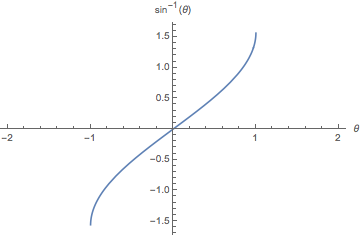
Therefore, we need
Electron Center of Mass Frame
Relativistically, the x, y, and z components have the same magnitude, but opposite direction, in the conversion from the Moller electron's Center of Mass frame to the electron's Center of Mass frame.
where previously it was shown
Electron Lab Frame
We can perform a Lorentz transformation from the Center of Mass frame, with zero total momentum, to the Lab frame.
Without knowing the values for gamma or beta, we can use the fact that lengths of the two 4-momenta are invariant
Setting these equal to each other, we can use this for the collision of two particles of mass m1 and m2. Since the total momentum is zero in the Center of Mass frame, we can express total energy in the center of mass frame as
Since momentum is conserved, the initial momentum from the incident electron and stationary electron is still the same in the Lab frame, therefore
This is the same as the initial total energy in the Lab frame, which should be expected since scattering is considered to be an elastic collision.
Since,
Using the relation
Using
DV_RunGroupC_Moller#Momentum distributions in the Center of Mass Frame